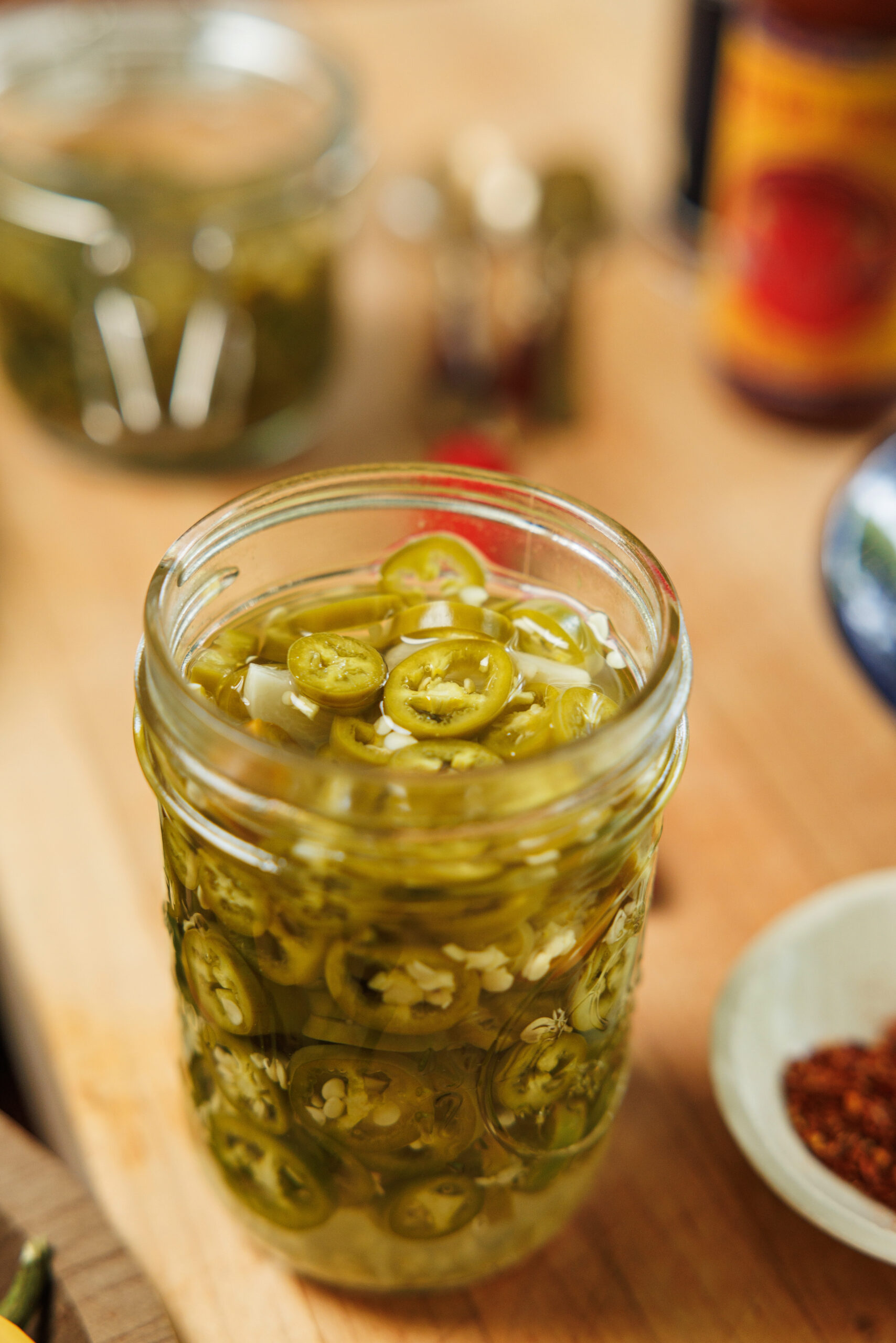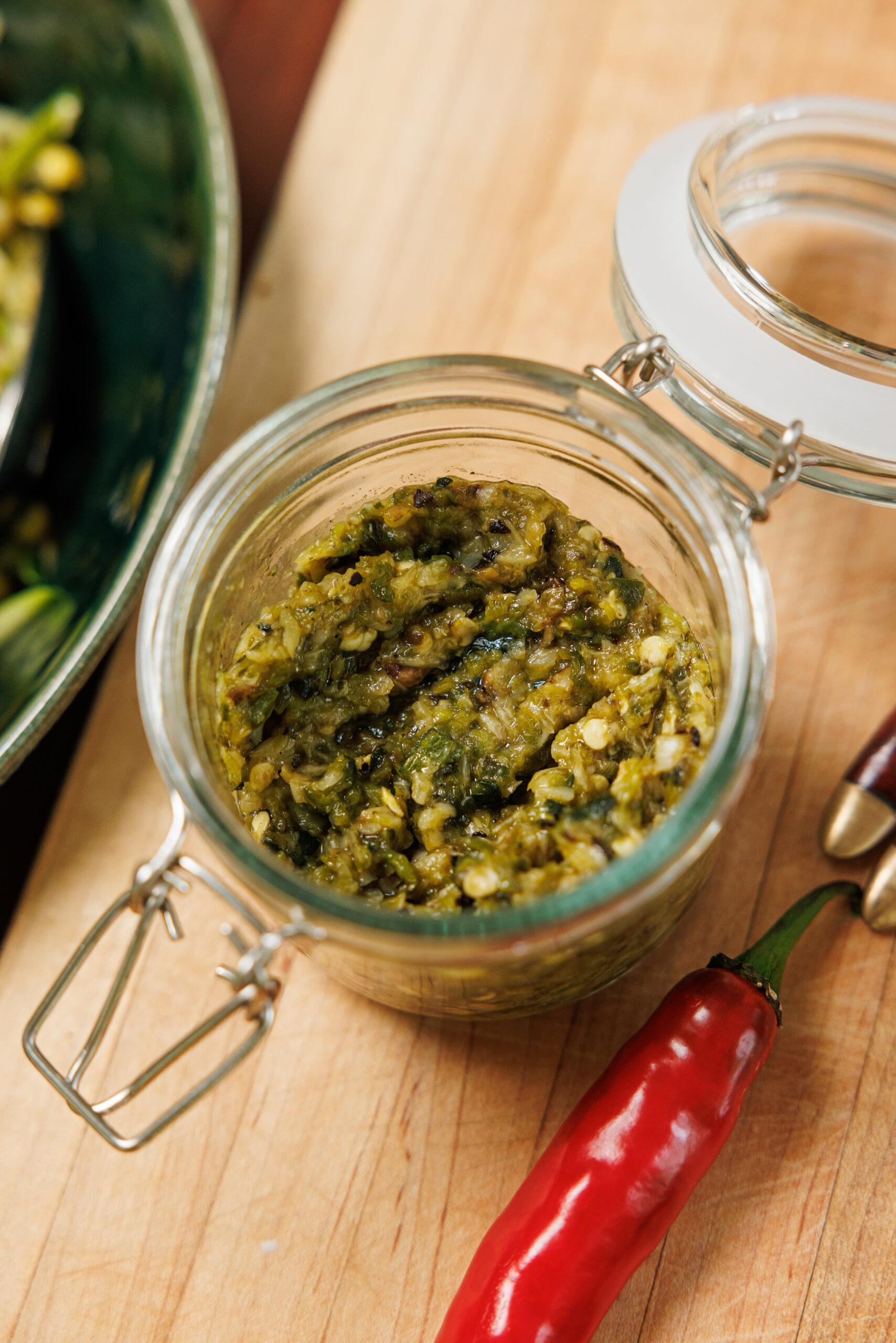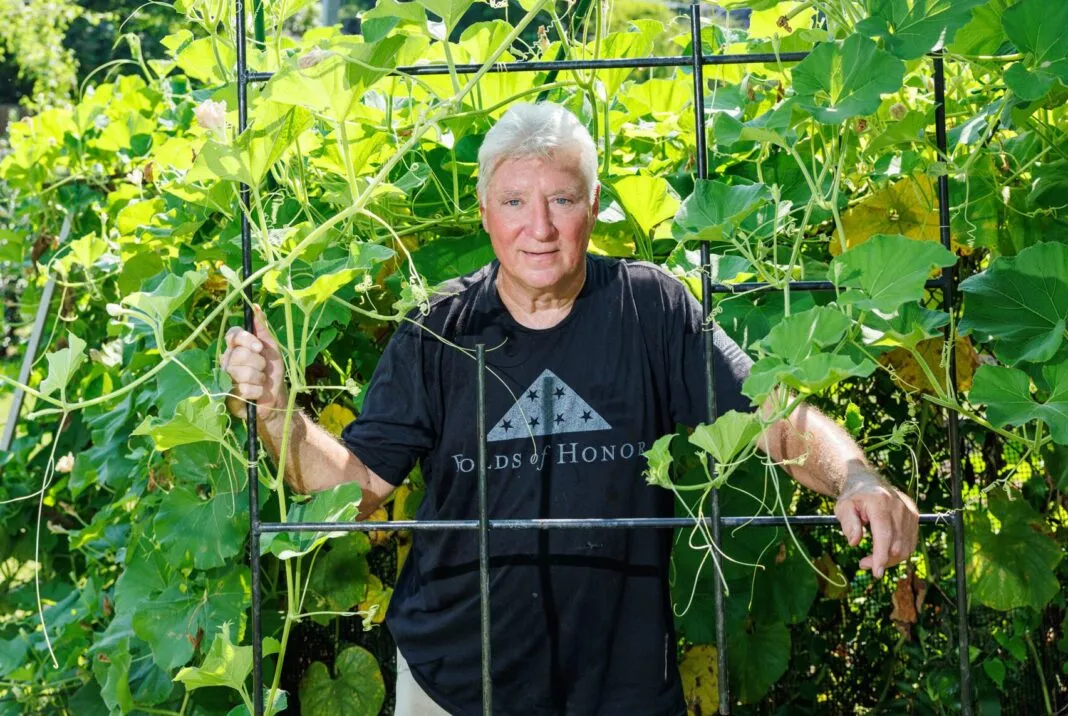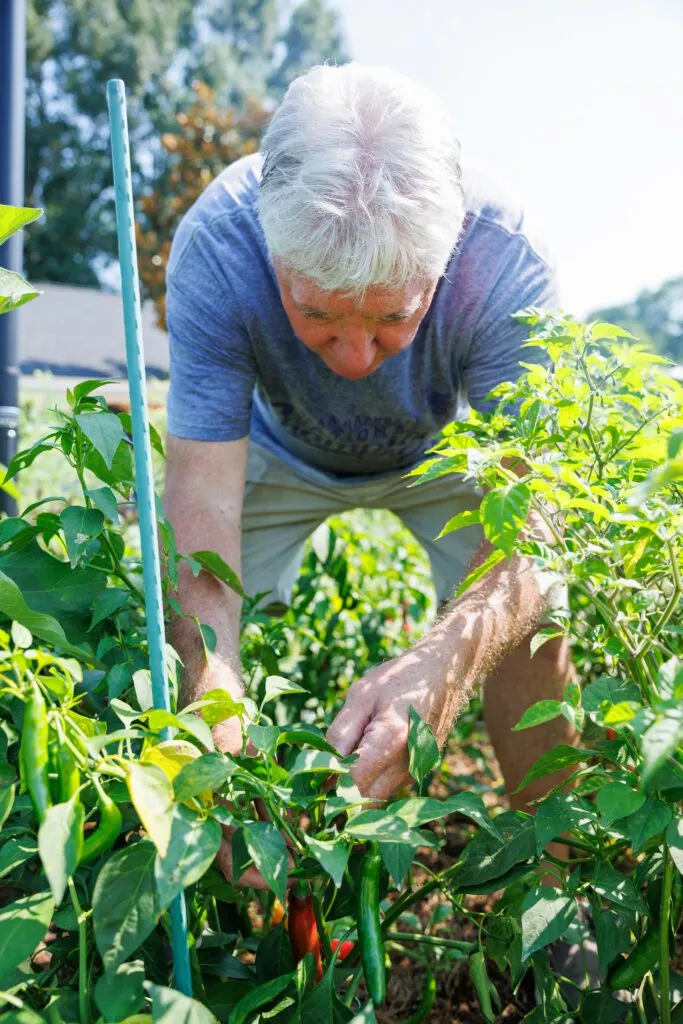Homegrown peppers are the passion project of District Attorney Hillar Moore
The inventory of my refrigerator and pantry includes more potions, powders and sprinkles with hot, spicy or fiery on the label than Louisiana has parishes. Spicy is king in my book, and when I overheard two men rapping about their hot pepper gardens behind me in line at the Red Stick Farmers’ Market, my ears perked up.
As I recall, the dialogue went something like this: Man one, in Baton Rouge Police Department uniform: “How are your peppers coming along?”
Man two, in a local landscaping company T-shirt smudged with garden soil: “Good. Yours?”
Their banter continued. I put my manners on hold and interrupted. I needed to know more and asked if I could interview them.
The policeman politely declined, deferring to his friend, the real expert. Forgive me for being forward. I asked for the man’s number, and he obliged.
”Do you work for the landscaping company?” I asked. The quick answer was no. Then I asked for his name. “Hillar.” Somehow, I was unaware that this pepper-gardening guru is the East Baton Rouge District Attorney.
When I visited Hillar Moore’s pepper garden at the peak of harvest, I discovered a bounty of summer produce that I had never before witnessed in a backyard plot. This plot encompasses the front, sides and back of every cultivable piece of earth—an abundance that could feed the masses and does.
“I’m one of seven brothers and sisters, and my office has 170 people,” he explains. “I harvest on the weekends and bring it to work on Mondays.”
He led me around the beds and pots of vibrant pepper plants—each one bedazzled with edible ornaments of every type: lemon-drop, gypsy sweet (a favorite), red lanterns, sugar-rush peach plus, shishitos, ghosts and habaneros in rainbow colors, and classic jalapeños and serranos, just to scratch the surface.
A beautiful shade tree is loaded with cooking pears, alongside a sapling peach tree ready to be planted and hearty citrus trees that have survived the rugged weather. Cucuzza squash dangle like baseball bats from a canopy Moore fabricated with scrap metal. There are eggplants covering the spectrum of violet in all shapes and sizes. Also, there are tons of tomatoes and okra, and it is hard to tell what else.
I wondered aloud how one person could manage this whole enterprise, and the answer was simple. After coaching his sons’ baseball teams through countless seasons when he couldn’t do much in the yard except cut the grass, Justice Farms took root. “Once baseball ended, I needed to fill my time with something else and decided to try to grow produce,” he remarks.
The timing also coincided with the release of the popular book How Not to Die by Michael Greger.
“It’s about eating healthier, especially veggies,” Moore says. “The book made sense and helped me to be more aggressive in growing more and giving them to family and friends.”
Moore parallels his green thumb with baseball: “Farming and baseball have a lot in common. Generally, they start in the cold of winter when the grass and weather are not so green or nice. However, every farmer and baseball player or coach is beginning anew and believes they will have the best season ever.”
He references the nuances of each, which sometimes overlap: weather, bugs, disease, injuries, good fortune. He treasures the Johnny’s Seeds catalog, where he orders his specialty seeds, and Jim Mizell of Mizell Farms in Folsom, who grows his seeds to seedlings. He credits Dr. Kiki Fontenot of the LSU AgCenter for dispensing advice and local nurseries Clegg’s and Plant Barn for his gardening supplies.
With thanks to this industrious neighborhood farmer, my collection of spicy goodness expanded into new horizons. I have roasted, dried, pickled and fried all manner of peppers. It’s a winning season and I am so grateful for the bounty of Justice Farms landing in my kitchen.

Pickled Serranos
While visiting “Justice Farms,” a couple of Moore’s friends, who call themselves FOH (Friends of Hillar), stopped by to pick some peppers. Credit to Michael Beychok for the tips on pickling green serranos and drying/grinding red serranos for the best crushed red pepper. Ratios for the pickling technique adapted from Mrs. Wheelbarrow’s Practical Pantry by Cathy Barrow.
8 oz. serrano peppers, rinsed and sliced into 1/8-inch thick rings
1 cup non-chlorinated water
1 cup white or cider vinegar
2 garlic cloves, slivered
1 Tbsp. Kosher salt
½ tsp. granulated sugar
Divide sliced peppers among 4 (1-cup) Mason jars.
Combine water, vinegar, garlic, salt and sugar in a small saucepan and bring to a simmer, stirring to dissolve salt and sugar. Pour warm brine over peppers in each jar, dividing evenly. If peppers poke up above liquid, weigh them down with a smaller jar or canning weight until almost cool. Cover each jar tightly and refrigerate for up to a month. Share with friends.
Makes 4 (1-cup) jars

Red Pepper Flakes
Left to ripen on the plant, serranos will change from green to red, the flavor turning from fiery to more fruity. Dry the peppers in a dehydrator, if you have one handy. I used my convection oven on 200 degrees.
Whole red serranos, rinsed
Place serranos on a rack inside a rimmed baking sheet and slide it into a 200-degree oven. Turn after about 2 hours and continue drying for another 2 to 3 hours, until peppers are wrinkly and crisp. Let cool completely. Remove stems and crumble into a spice grinder. Pulse grinder a few times until flakes are the consistency you desire. Store in an airtight container. Sprinkle on everything.

Roasted Jalapeño Garlic Butter
This recipe does not contain butter but spreads on hot toast like actual butter with a spicy punch. A dollop of this enhances every summer dish. Make a huge batch and freeze like cubes of butter in ice cube trays, then you can enhance every winter dish, too. I learned this technique from my favorite cookbook Rick Bayless’s Mexican Kitchen.
8 large-ish jalapeños, rinsed
1 head fresh garlic, cloves separated, unpeeled
2 Tbsp. olive oil
½ tsp. salt
Place jalapeños and unpeeled garlic cloves on a heavy skillet (preferably cast iron) over medium heat. Turn occasionally and cook until garlic and jalapeños are softened and blackened in spots. Remove to a plate to cool, then peel garlic and remove stems from jalapeños.
Place pan-roasted garlic and jalapeños in bowl of a food processor with steel blade and pulse to chop. Drizzle in olive oil and sprinkle in salt and continue blending to a medium-coarse paste. Transfer mixture to a jar. Cover and refrigerate for up to 2 weeks or freeze in cubes as indicated above. Add to everything. (Guacamole! Soups! Stir-fried veggies!)
















